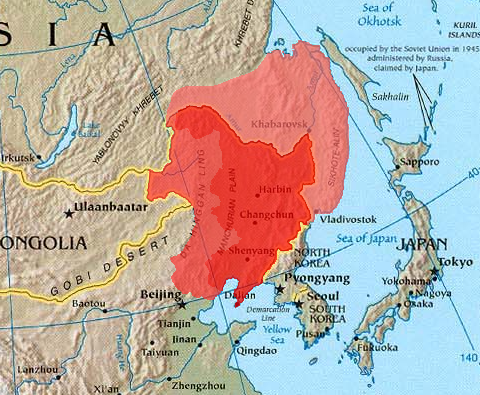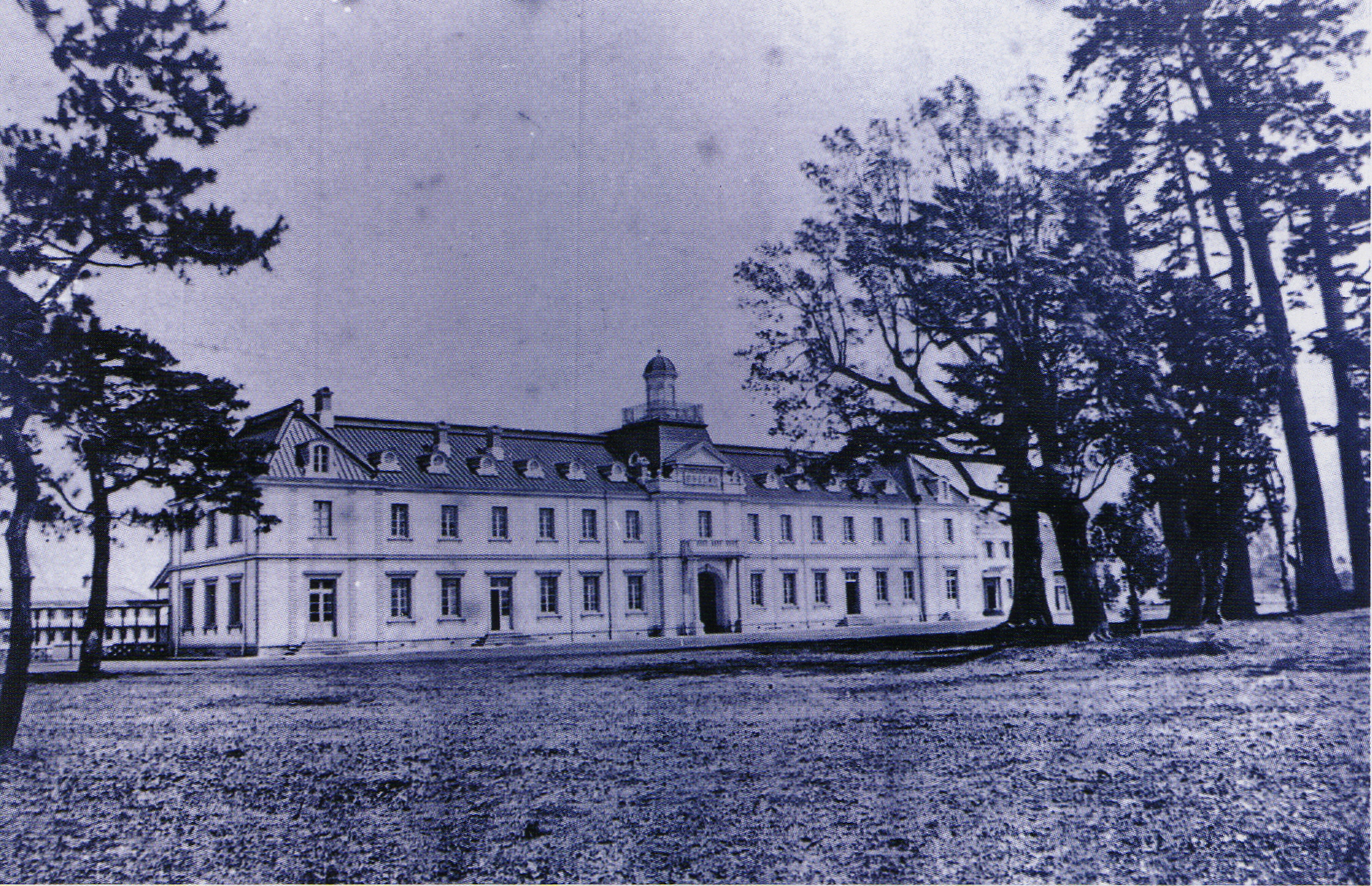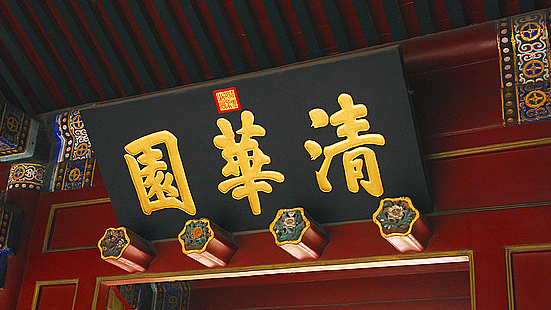|
Jiang Baili
Jiang Fangzhen (13 October 1882 – 4 November 1938), courtesy name Baili and art name Danning, better known as Jiang Baili, was a Chinese military writer, strategist, trainer and army general of the Republic of China. Life and career under the Qing dynasty Jiang was born in Xiashi Town, Haining County, Zhejiang Province in 1882 during the late Qing dynasty. In 1898, he sat for the imperial examination at the provincial level and obtained a ''xiucai'' degree. The following year, he gained admission to the Qiushi Academy (now Zhejiang University) in Hangzhou, and later to Tsinghua University in 1901. He was recognised as a talent by the provincial officials, who sponsored him to further his studies abroad in Japan at the Tokyo Shinbu Gakko and later the Imperial Japanese Army Academy. During his time in Japan, he joined the Tongmenghui and became the chief editor of the publication ''Zhejiang Chao'' (浙江潮). He also participated in activities organised by Chinese students ... [...More Info...] [...Related Items...] OR: [Wikipedia] [Google] [Baidu] |
Haining
() is a county-level city in Zhejiang Province, China, and under the jurisdiction of Jiaxing. It is in the south side of Yangtze River Delta, and in the north of Zhejiang. It is to the southwest of central Shanghai, and east of Hangzhou, the provincial capital. To its south lies the Qiantang River. The city has a land area of and as of the 2020 census, had a population of 1,076,199 inhabitants. Haining is known for its leather industry and spectacular tide in the Qiantang River. Since june 2021, it's linked to Hangzhou by the new suburban Hangzhou - Haining subway Line. Basic Facts Located in the YRD region close to Shanghai and adjoining Hangzhou, Haining serves as the core of the Hangzhou Metropolitan Economic Circle and the Greater Hangzhou Bay Rim Area. The city benefits from the “one-hour economic circle” of Shanghai, Hangzhou and Suzhou with a well-developed transportation network. Haining has been promoting integrated development between traditional and emerging in ... [...More Info...] [...Related Items...] OR: [Wikipedia] [Google] [Baidu] |
Imperial Examination
The imperial examination (; lit. "subject recommendation") refers to a civil-service examination system in Imperial China, administered for the purpose of selecting candidates for the state bureaucracy. The concept of choosing bureaucrats by merit rather than by birth started early in Chinese history, but using written examinations as a tool of selection started in earnest during the Sui dynasty (581–618) then into the Tang dynasty of 618–907. The system became dominant during the Song dynasty (960–1279) and lasted for almost a millennium until its abolition in the late Qing dynasty reforms in 1905. Aspects of the imperial examination still exist for entry into the civil service of contemporary China, in both the People's Republic of China (PRC) and the Republic of China (ROC). The exams served to ensure a common knowledge of writing, Chinese classics, and literary style among state officials. This common culture helped to unify the empire, and the ideal of achievem ... [...More Info...] [...Related Items...] OR: [Wikipedia] [Google] [Baidu] |
Yuan Shikai
Yuan Shikai (; 16 September 1859 – 6 June 1916) was a Chinese military and government official who rose to power during the late Qing dynasty and eventually ended the Qing dynasty rule of China in 1912, later becoming the Emperor of China. He first tried to save the dynasty with a number of modernization projects including bureaucratic, fiscal, judicial, educational, and other reforms, despite playing a key part in the failure of the Hundred Days' Reform. He established the first modern army and a more efficient provincial government in North China during the last years of the Qing dynasty before forcing the abdication of the Xuantong Emperor, the last monarch of the Qing dynasty in 1912. Through negotiation, he became the first President of the Republic of China in 1912. This army and bureaucratic control were the foundation of his autocratic rule. In 1915 he attempted to restore the hereditary monarchy in China, with himself as the Hongxian Emperor (). His death in 1916 ... [...More Info...] [...Related Items...] OR: [Wikipedia] [Google] [Baidu] |
Yinchang
Yin Chang or In-ch'ang (; 1859 –1928 or 1934) was a military official, ambassador to Germany, and educational reformer in the Qing Dynasty and the Republic of China. He was appointed the nation's first Minister of War in the late Qing Dynasty. During the Republic he served as the military Chief of Staff for all of the subsequent presidents in the Beiyang Government. He was ethnic Manchu, and his family belonged to the Plain White Banner Clan of the Manchu Military Organization (滿洲正白旗); he held the title of Prince of the Plain White Banner Clan; at court he was addressed as Wu-lou (五/午楼). Biography In the Qing Dynasty Originally Yin Chang was a student of the Guozijian, and by 1872 he was studying German at the Tongwen Guan, Beijing. In 1877 he was sent to Germany as an attaché to the recently established Chinese Embassy in Berlin which had offices in Vienna and Amsterdam. On his arrival in Berlin he was not fluent with spoken German and changed from 3 ... [...More Info...] [...Related Items...] OR: [Wikipedia] [Google] [Baidu] |
Wuchang Uprising
The Wuchang Uprising was an armed rebellion against the ruling Qing dynasty that took place in Wuchang (now Wuchang District of Wuhan), Hubei, China on 10 October 1911, beginning the Xinhai Revolution that successfully overthrew China's last imperial dynasty. It was led by elements of the New Army, influenced by revolutionary ideas from Tongmenghui. The uprising and the eventual revolution directly led to the downfall of the Qing dynasty with almost three centuries of imperial rule, and the establishment of the Republic of China (ROC), which commemorates the anniversary of the uprising's starting date of 10 October as the National Day of the Republic of China. The uprising originated from popular unrest about a railway crisis, and the planning process took advantage of the situation. On 10 October 1911, the New Army stationed in Wuchang launched an assault on the residence of the Viceroy of Huguang. The viceroy Ruicheng quickly fled from the residence, and the revolutiona ... [...More Info...] [...Related Items...] OR: [Wikipedia] [Google] [Baidu] |
Manchuria
Manchuria is an exonym (derived from the endo demonym "Manchu") for a historical and geographic region in Northeast Asia encompassing the entirety of present-day Northeast China (Inner Manchuria) and parts of the Russian Far East ( Outer Manchuria). Its meaning may vary depending on the context: * Historical polities and geographical regions usually referred to as Manchuria: ** The Later Jin (1616–1636), the Manchu-led dynasty which renamed itself from "Jin" to "Qing", and the ethnicity from "Jurchen" to "Manchu" in 1636 ** the subsequent duration of the Qing dynasty prior to its conquest of China proper (1644) ** the northeastern region of Qing dynasty China, the homeland of Manchus, known as "Guandong" or "Guanwai" during the Qing dynasty ** The region of Northeast Asia that served as the historical homeland of the Jurchens and later their descendants Manchus ***Qing control of Dauria (the region north of the Amur River, but in its watershed) was contested in 1643 ... [...More Info...] [...Related Items...] OR: [Wikipedia] [Google] [Baidu] |
Zhao Erxun
Zhao Erxun (23 May 1844 – 3 September 1927), courtesy name Cishan, art name Wubu, was a Chinese political and military officeholder who lived in the late Qing dynasty. He served in numerous high-ranking positions under the Qing government, including Viceroy of Sichuan, Viceroy of Huguang, and Viceroy of the Three Northeast Provinces. After the fall of the Qing dynasty, he became a historian and was the lead editor of the '' Draft History of Qing'' (''Qing Shi Gao''). Life Early career Zhao's ancestral roots were in Tieling, Fengtian Province (present-day Liaoning Province). His family was under the Plain Blue Banner of the Han Chinese Eight Banners. He sat for the provincial-level imperial examination in 1867 and obtained the position of a ''juren''. In 1874, he sat for the palace-level examination and emerged as a ''jinshi'', after which he was admitted to the Hanlin Academy as a ''bianxiu'' (編修; compiler and editor). The first position Zhao held was an assistant ... [...More Info...] [...Related Items...] OR: [Wikipedia] [Google] [Baidu] |
Tongmenghui
The Tongmenghui of China (or T'ung-meng Hui, variously translated as Chinese United League, United League, Chinese Revolutionary Alliance, Chinese Alliance, United Allegiance Society, ) was a secret society and underground resistance movement founded by Sun Yat-sen, Song Jiaoren, and others in Tokyo, Japan, on 20 August 1905, with the goal of overthrowing China's Qing dynasty. It was formed from the merger of multiple late-Qing dynasty Chinese revolutionary groups. History Revolutionary era The Tongmenghui was created through the unification of Sun Yat-sen's Xingzhonghui (Revive China Society), the Guangfuhui (Restoration Society) and many other Chinese revolutionary groups. Among the Tongmenghui's members were Huang Xing, Li Zongren, Zhang Binglin, Chen Tianhua, Wang Jingwei, Hu Hanmin, Tao Chengzhang, Cai Yuanpei, Li Shizeng, Zhang Renjie, and Qiu Jin. In 1906, a branch of the Tongmenghui was formed in Singapore, following Sun's visit there; this was called the Nanyang br ... [...More Info...] [...Related Items...] OR: [Wikipedia] [Google] [Baidu] |
Imperial Japanese Army Academy
The was the principal officer's training school for the Imperial Japanese Army. The programme consisted of a junior course for graduates of local army cadet schools and for those who had completed four years of middle school, and a senior course for officer candidates. History and background Established as the ''Heigakkō'' in 1868 in Kyoto, the officer training school was renamed the Imperial Japanese Army Academy in 1874 and relocated to Ichigaya, Tokyo. After 1898, the Academy came under the supervision of the Army Education Administration. In 1937 the Academy was divided, with the Senior Course Academy being relocated to Sagamihara in Kanagawa prefecture, and the Junior Course School moved to Asaka, Saitama. The 50th graduation ceremony was held in the new Academy buildings in Sagamihara on 20 December 1937, and was attended by the Shōwa Emperor ( Emperor Hirohito) himself. In 1938, a separate school was established for military aviation officers. During World War II, ... [...More Info...] [...Related Items...] OR: [Wikipedia] [Google] [Baidu] |
Tokyo Shinbu Gakko
The was a military preparatory school located in Tokyo, Japan. Established in 1896 by the Imperial Japanese Army for the purpose of providing basic military training to students from China, many of its students later played important roles in the Xinhai Revolution and in the early period of the Republic of China. The school closed in 1914. Background and creation Following the resumption of diplomatic relations in 1896 between the Empire of Japan and Qing dynasty China following the First Sino-Japanese War, the Chinese government began a series of military reforms to create a modern army along western-lines. The Pan-Asian faction within the Japanese government actively assisted in this effort, in hopes of forming an Asian alliance against the Empire of Russia and other European powers, as well as to place Japan in a favorable position to influence the direction of Chinese military reforms and domestic political policy. To this effect, the Imperial Japanese Army General St ... [...More Info...] [...Related Items...] OR: [Wikipedia] [Google] [Baidu] |
Tsinghua University
Tsinghua University (; abbr. THU) is a national public research university in Beijing, China. The university is funded by the Ministry of Education. The university is a member of the C9 League, Double First Class University Plan, Project 985, and Project 211. Since its establishment in 1911, it has produced many notable leaders in science, engineering, politics, business, academia, and culture. As of 2022, Tsinghua University ranked 14th in the world by the 2023 QS World University Rankings and 16th globally by the 2022 ''Times Higher Education World University Rankings''. In 2021, Tsinghua ranked first in the Asia-Pacific region by '' THE Asia University Rankings'' and the ''U.S. News & World Report''. History Early 20th century (1911–1949) Tsinghua University was established in Beijing during a tumultuous period of national upheaval and conflicts with foreign powers which culminated in the Boxer Rebellion, an uprising against foreign influence in China ... [...More Info...] [...Related Items...] OR: [Wikipedia] [Google] [Baidu] |




